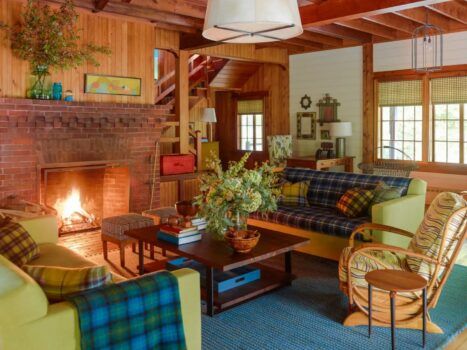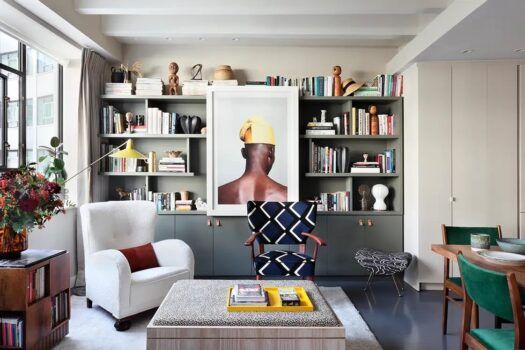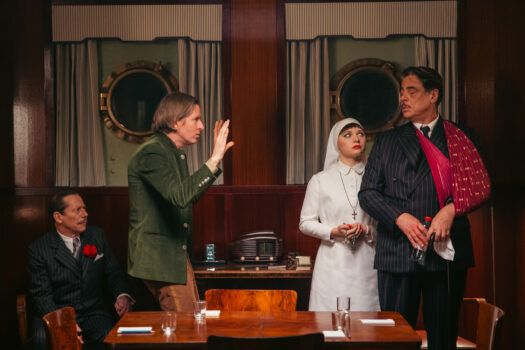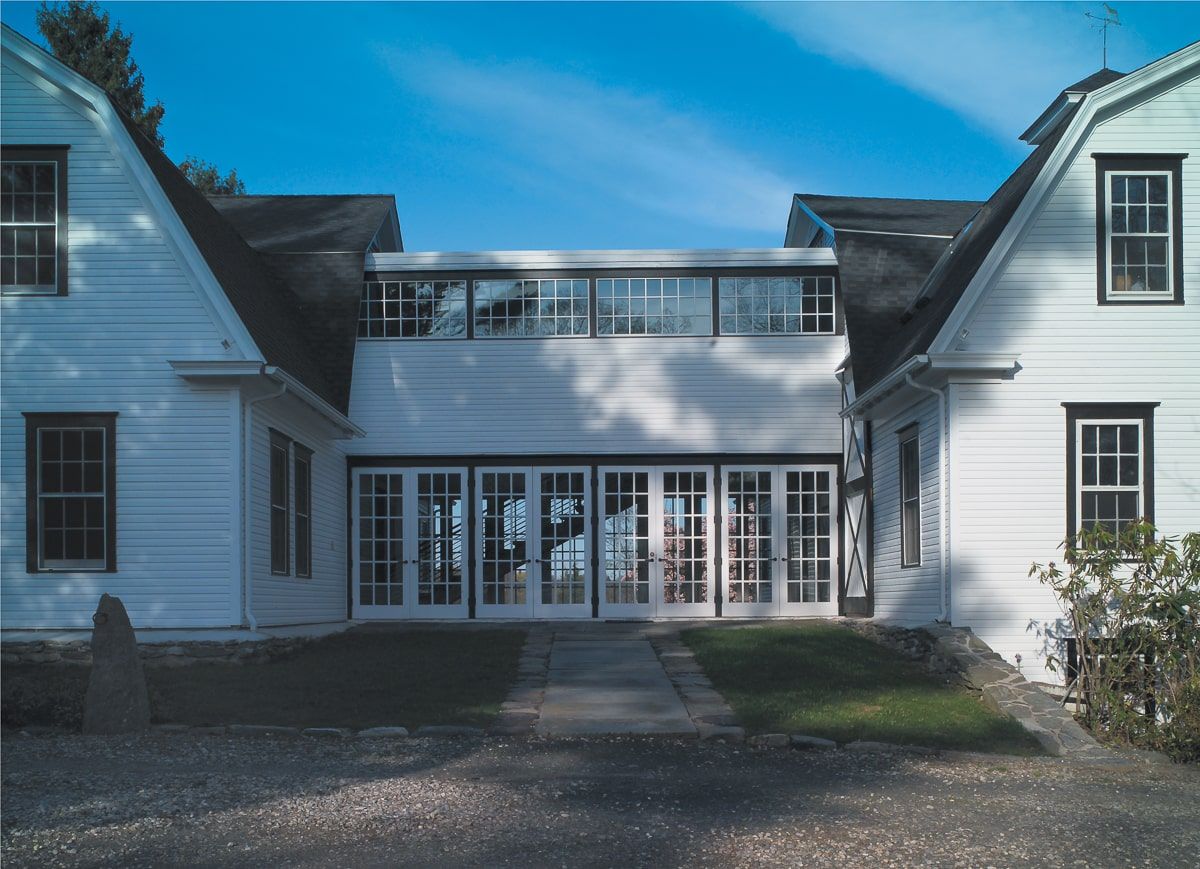
For more than 30 years, Rhonda Brown and Tom Grotta have run browngrotta arts, a pioneering dealer of fiber and modern crafts and a publisher of catalogues featuring the best and brightest talents in the field.
Their home, in Wilton, Connecticut, is well-known to collectors and museum curators. The 10,000-square-foot renovated barn is also their gallery, which houses a revolving collection of world-class textile, mixed-media and dimensional art from around the world.
Brown and Grotta came upon their two-acre property in 1999. They had just exhibited a collection at the Montclair Art Museum, in New Jersey, presenting exciting large works in a manner they never could have achieved in the small farmhouse they occupied at the time. The experience prompted them to find a new home, one that would allow them to properly showcase the scale and haptic nature of the fiber pieces by their artists.
“We looked at 236 houses before we decided to move to this barn,” says Grotta. “We needed high ceilings because we were limited with what we could show in our previous space. Wilton has a lot of historical homes, so that means a lot of low ceilings.”
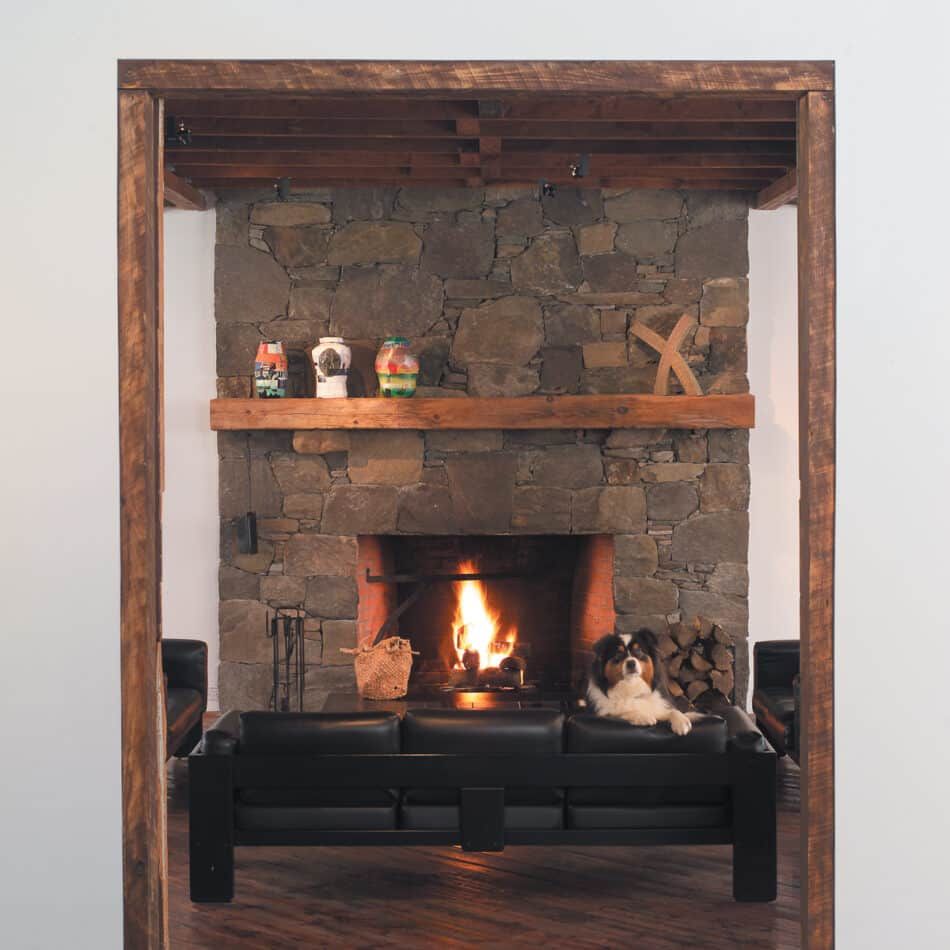
The original 1895 structure boasted 20-foot-tall ceilings, well-proportioned rooms and great bones. But it also had “a traditional barn shape,” as Brown describes it. So, they brought in architect David Ling, who had helped with their previous 1927 farmhouse.
During a two-year renovation, Ling duplicated the existing barn and added a corridor of glass doors — which now serves as the entrance hall — to connect the old and new structures. The resulting H-shape formation provided a seamless flow between the home and gallery spaces, and created unobstructed sight lines throughout the interiors.
Brown and Grotta also hired landscape architect Walter Carell, who uncovered and exposed the beautiful bluestone that was hidden beneath the property’s foundation. This was then used to pave the walkway leading to the entrance. “We really wanted for the home to look from the outside as if it had always been there. And so, the surprise is when you come inside the doors,” says Grotta.
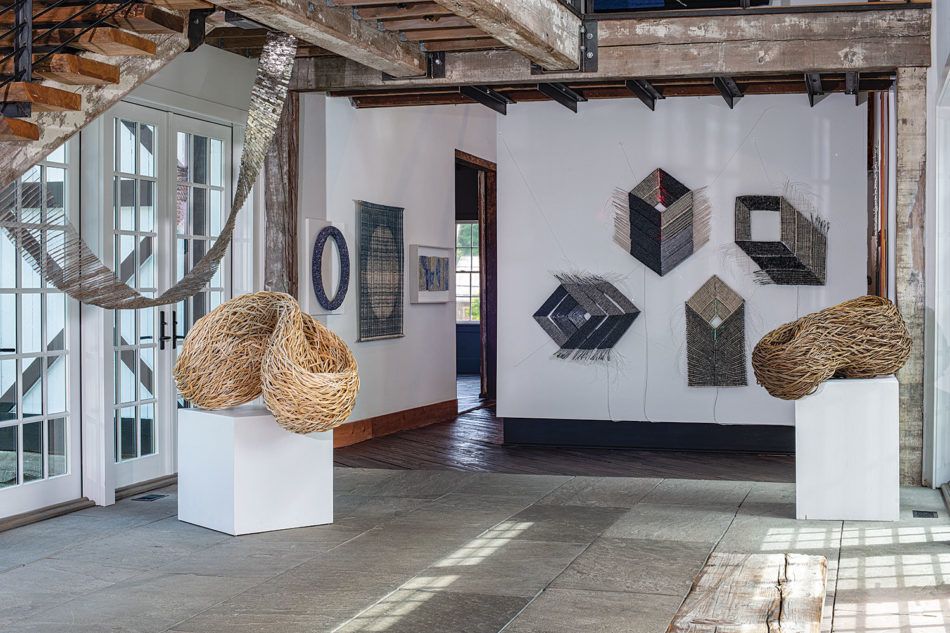
The light-filled front hall, which runs east-west, is paved with the same bluestone used for the exterior walkway, with the aim, Brown explains, to “bring the outside in.” The space’s minimalist, industrial aesthetic lends itself to large-scale fiber works and textural pieces. “We like the differing textures of the wood, the brick and the corrugated and galvanized steel as backdrops for our images of the work,” she says.
“Nobody was servicing textiles and fiber, quite frankly,” says Grotta, referring to the gallery’s early days. “We realized we could do something, because if they’re going to come to Wilton, Connecticut, we had to make it worth their while.”
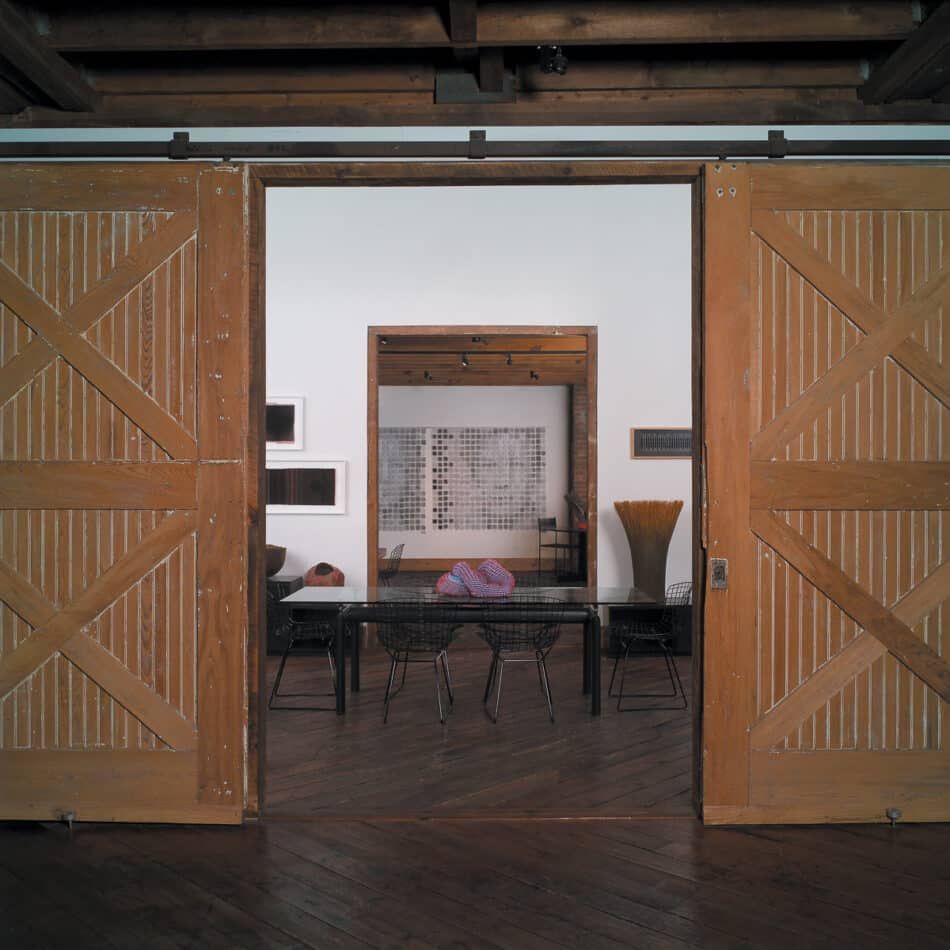
Their passion paid off, as they quickly attracted the attention of such iconic textile artists as Sheila Hicks, Lenore Tawney, Ed Rossbach, Ritzi Jacobi and Kay Sekimachi. “We wanted to do something we could be the best at, and it got better and better as we grew, and people wanted to be photographed and be among the other people in our catalogues,” Grotta says.
Here, Grotta and Brown take us through more of the barn’s spaces.
Kitchen & Dining Room
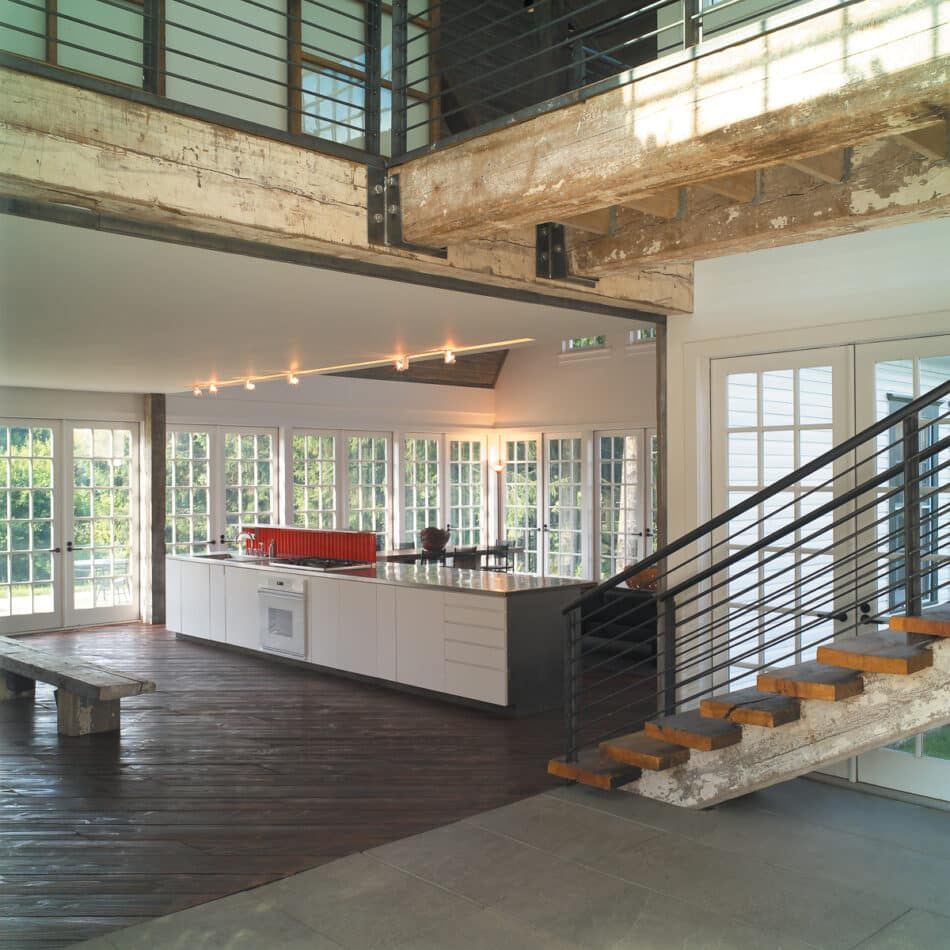
To open up the interiors, the walls were painted in a bright white throughout. For the new barn, beams were purchased and treated to match the existing ones in the old barn. These were also used for the main staircase, which was finished with treads made from slabs of wood salvaged from a local lumber yard.
The original barn’s dark-wood wall panels were repurposed into floor boards for the new barn’s lower level, and doors found in the old attic were used on the second level.
“In the new barn, there are 33 French doors, so there’s a lot of light and less wall. It’s where we spend most of our time living,” Grotta says. “The other side of the barn is where I do most of my photography. Even though there are a lot of windows from the original barn, there’s less light, which is better for the art.”
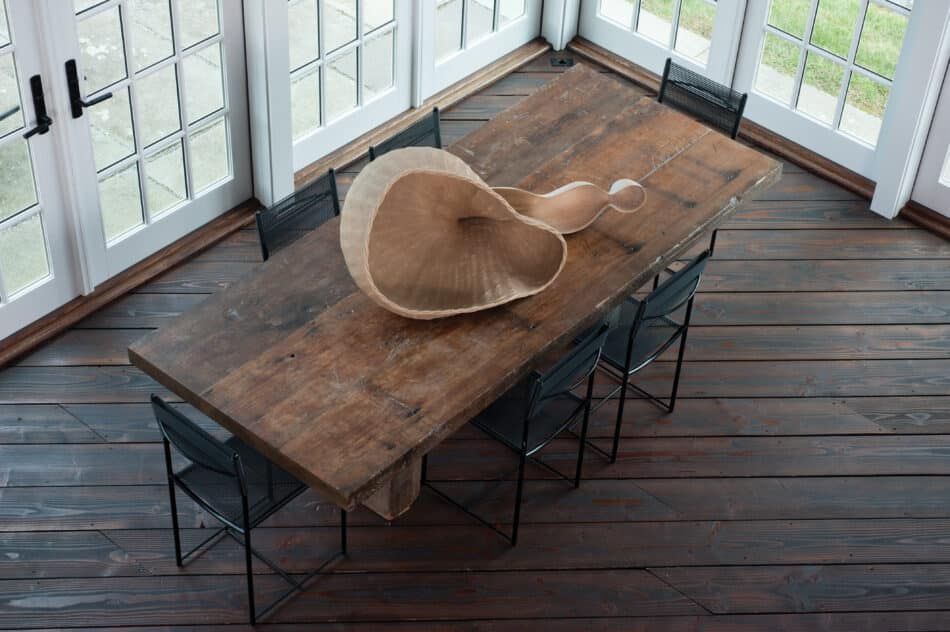
Brown and Grotta keep their home intentionally spare because it needs to accommodate all sizes and types of art. Most of the furniture can also be moved around. “It’s as much a photo studio as it is a space to show art and a place that we live and entertain in, so it’s got to be flexible,” says Grotta.
Among the pedigreed furniture pieces here are Spaghetti chairs by Giandomenico Belotti that have traveled with the couple throughout the years and that are now used everywhere in the home.
Living Room
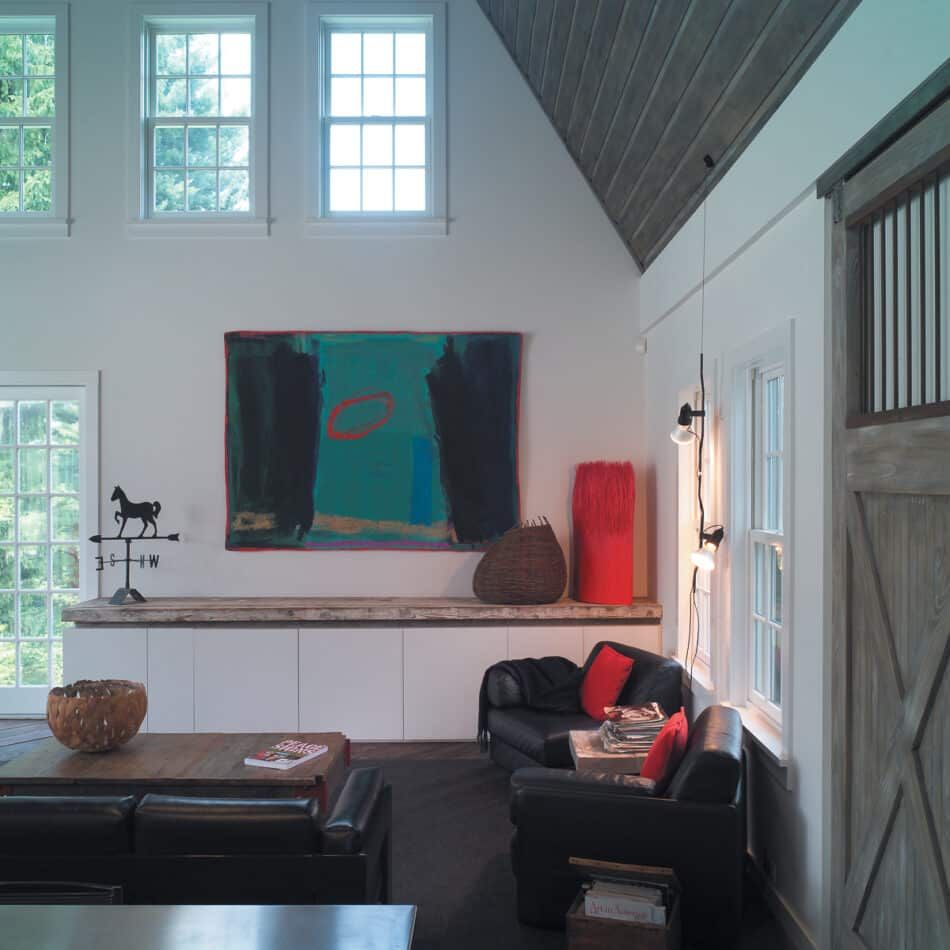
Italian design from the 1960s and ’70s has a special place in the Brown-Grotta home. Many of the pieces were inherited from Grotta’s mother, who acquired them during her years working as an interior designer. These include the five Tobias Scarpa–designed Bastiano sofas in the living room, which the couple love for their modular versatility.
Another noteworthy piece is the custom cocktail table inlaid with ceramic tiles by Claude Vermette, one of the first painters they represented.
Main Bedroom
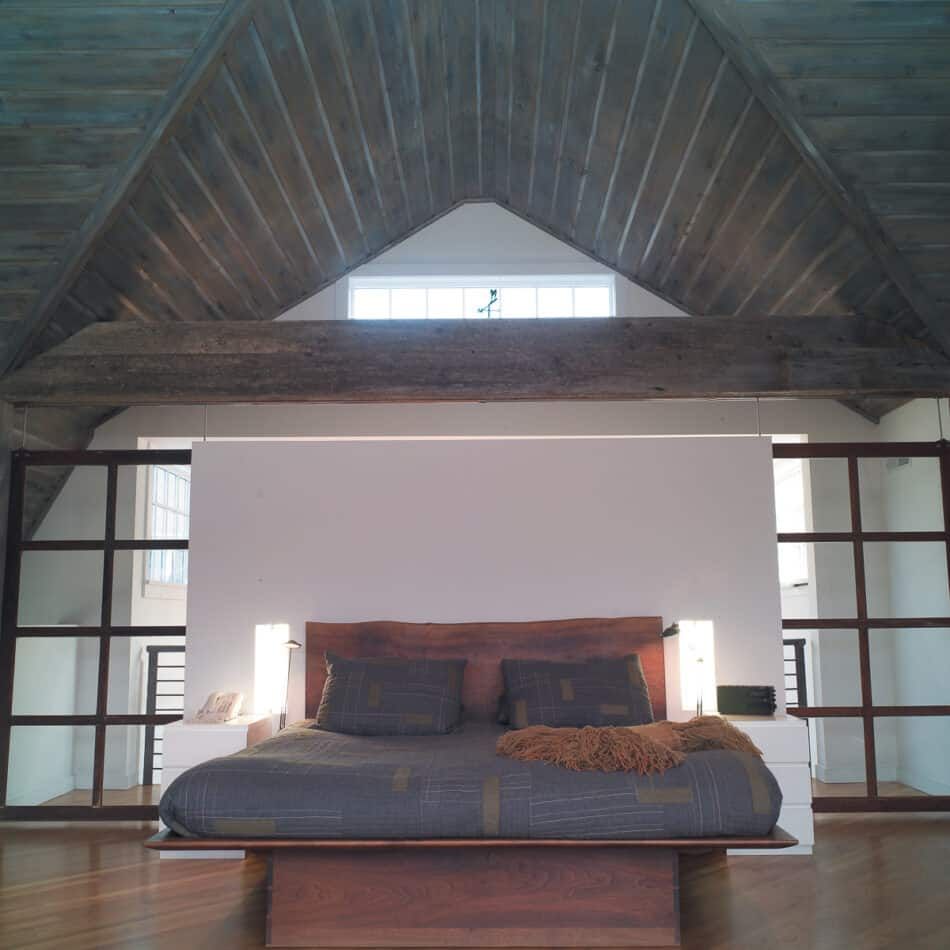
In the couple’s bedroom, the walnut bed by Edgar and Joyce Anderson belonged to Grotta’s parents, who handed it down upon the completion of their Richard Meier-designed home, built to showcase the works they had commissioned over their lifetime from the celebrated furniture makers.
Grotta has amassed his own collection of handcrafted pieces by the Andersons. Scattered throughout the barn, these range from a server and Grotta’s childhood roll-top desk, both repurposed for use in the home’s old kitchen, to their son’s bed and a massive corner sofa. “We would not build a house that could not hold the corner sofa,” says Grotta.
Gallery
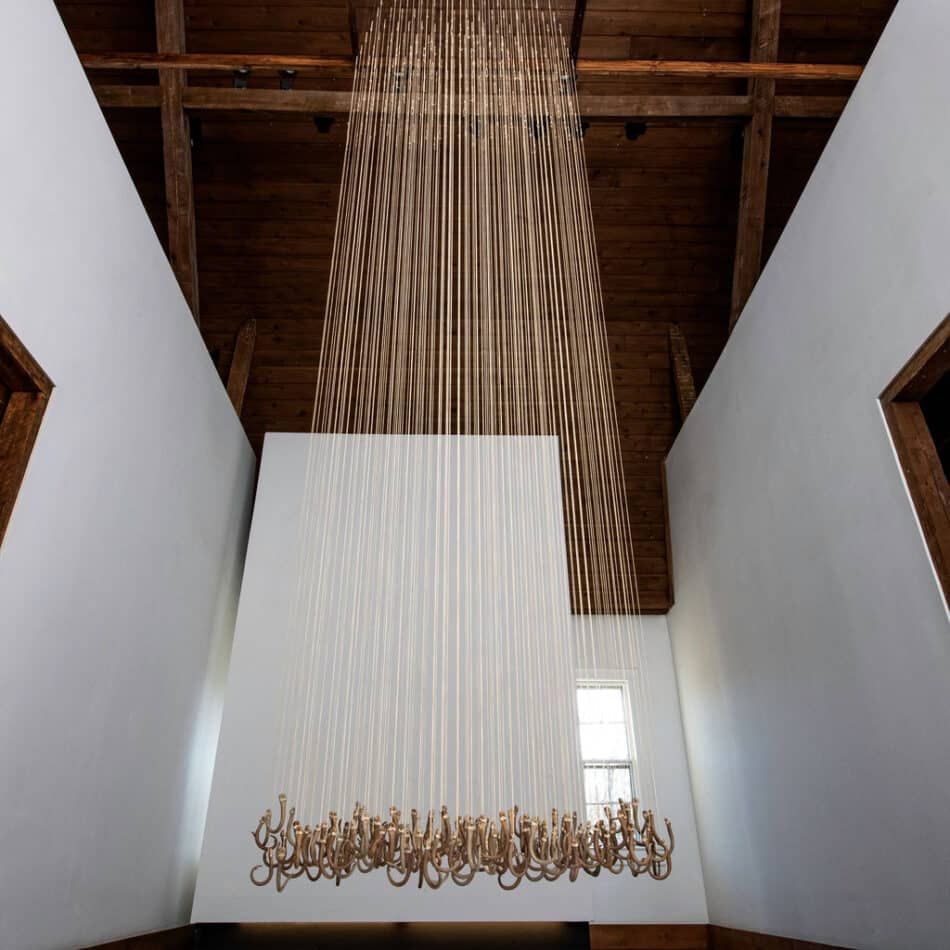
Over the 20 years since Brown and Grotta made the barn their home and gallery, they have exhibited works by longtime and budding international textile and fiber artists who have gained wide recognition from museums, art institutions and private collectors.
Highlights have included the exquisite fabrics of the renowned designer Jack Lenor Larsen, who has long been a decorator favorite; the baskets of Mary Merkel-Hess, one of the first contemporary basket artists shown at the Metropolitan Museum of Art, in New York; and the drawloom textiles of the late Ethel Stein, who, at the age of 96, was celebrated in a 2015 retrospective at the Art Institute of Chicago.
The couple is currently holding their annual “Art in the Barn” exhibition, visitable for free by reservation through September 20. Titled “Volume 50: Chronicling Fiber Art for Three Decades,” it comprises 120 works by 65 American and international artists.
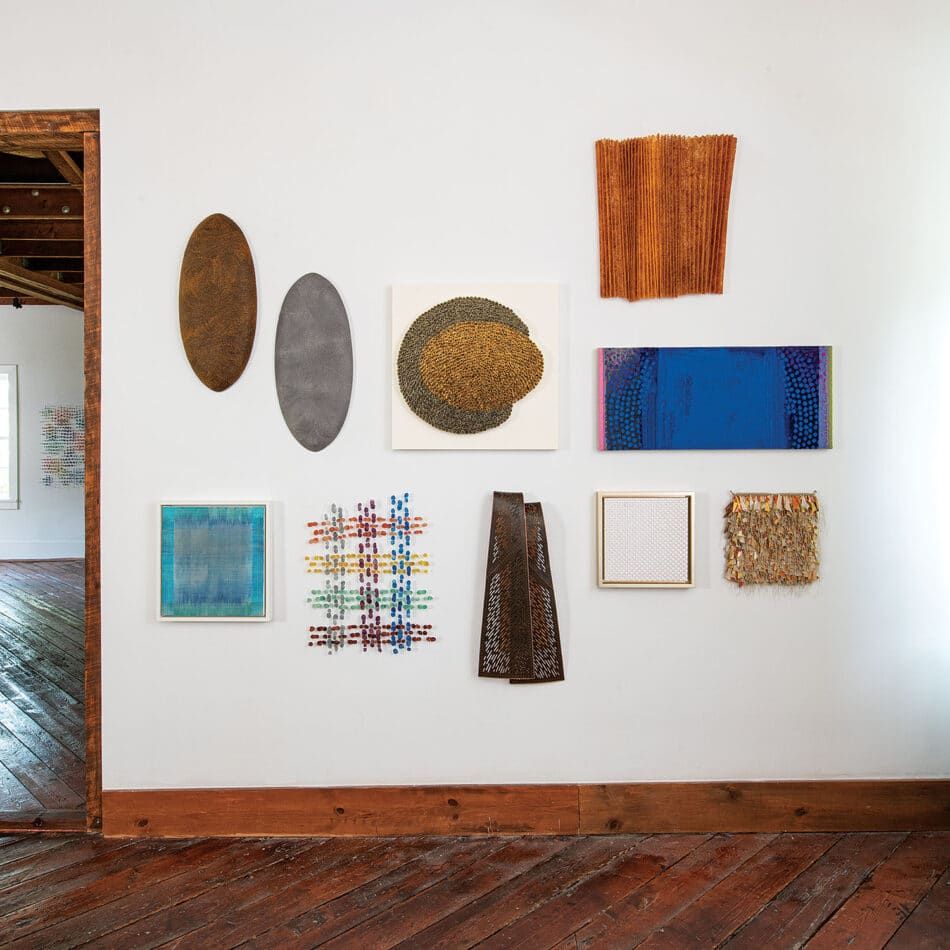
Among the more epically scaled pieces in the show are Annette Bellamy’s Long Lines (2010), a surreal 12-foot-high installation of ceramic fishing hooks on twine, and Lia Cook’s Su Series (2010–16), composed of 32 woven portraits, each created using a different technique.
“Textiles were sort of out of favor when we started doing this, but we loved them anyway, and we kept documenting them and making sure they were being shown in different ways,” says Brown.
Adds Grotta, “There’s no other place on the planet where you can see this caliber of textiles from all over the world in one place at one time.”

